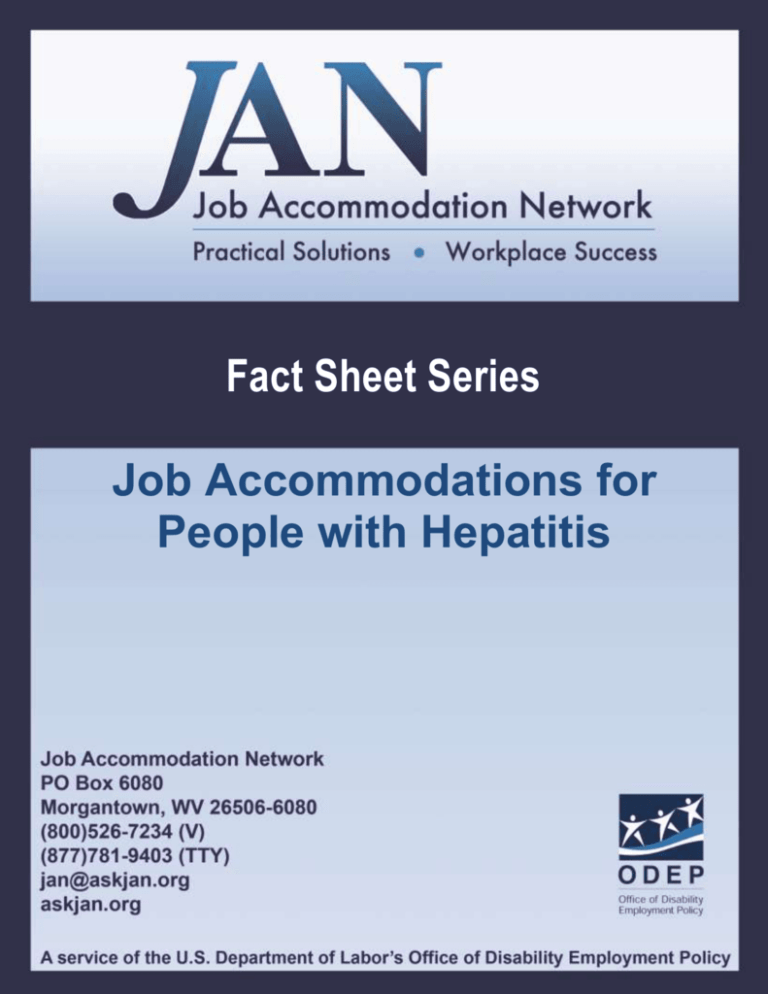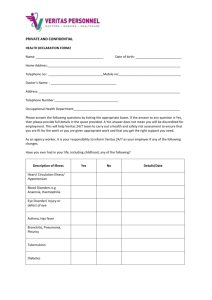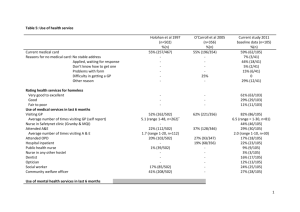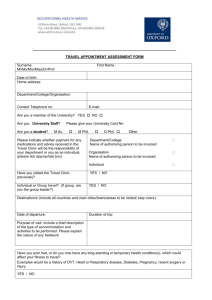Fact Sheet Series - Job Accommodation Network
advertisement

Fact Sheet Series Job Accommodations for People with Hepatitis JAN’S ACCOMMODATION FACT SHEET SERIES JOB ACCOMMODATIONS FOR PEOPLE WITH HEPATITIS There are several types of hepatitis and each has different modes of transmission, symptoms, and treatment. The most prevalent types are hepatitis A, B, & C: Hepatitis A is the most common type of Hepatitis. It is a liver disease that occurs when infected by the Hepatitis A Virus (HAV). HAV is transmitted through a fecal-oral route either by person-to-person transmission between household contacts or sex partners or by ingesting contaminated food or water. Bloodbourne transmission is rare. Hepatitis A is highly contagious if you are in close personal contact with an infected individual. The CDC Department of Health and Human Services publishes a list of infectious and communicable diseases transmitted through handling the food supply. Pathogens that can cause disease after an infected person handles food include the hepatitis A virus. No other type of hepatitis can be transmitted through the food supply. Symptoms include fatigue, nausea, jaundice, fever, and abdominal pain. Hepatitis B is a serious disease caused by a virus that attacks the liver. The virus, which is called hepatitis B virus (HBV), can cause lifelong infection, cirrhosis (scarring) of the liver, liver cancer, liver failure, and death. HBV is transmitted by contact with the blood or body fluids of an infected person. It is NOT spread through food, water, or by causal contact. Symptoms include jaundice, fatigue, abdominal pain, loss of appetite, nausea, and vomiting. Hepatitis C is a liver disease caused by the hepatitis C virus (HCV). HCV is transmitted by direct contact with infected blood. Symptoms include jaundice, fatigue, nausea, loss of appetite, abdominal pain, and vomiting. The following is a quick overview of some of the job accommodations that might be useful for employees with hepatitis. For a more in depth discussion, access JAN's publications at http://askjan.org/media/atoz.htm. To discuss an accommodation situation with a consultant, contact JAN directly. Fatigue/Weakness: Reduce or eliminate physical exertion and workplace stress Schedule periodic rest breaks away from the workstation Allow a flexible work schedule and flexible use of leave time Allow work from home Implement ergonomic workstation design Provide a scooter or other mobility aid if walking cannot be reduced 2 Cognitive Impairment: Provide written job instructions when possible Prioritize job assignments Allow periodic rest breaks to reorient Provide memory aids, such as schedulers or organizers Minimize distractions Allow a self-paced workload Reduce job stress Stress: Identify stressors and reduce stress Educate coworkers, but keep person and his/her condition confidential Offer peer counseling, telephone calls to emotional supports, an open door policy to supervisor, and time off for counseling or therapy Provide praise and positive reinforcement Other Medical Considerations: Flexible work schedule Time off from work to seek medical care Reassignment Resources Specifically for People with Hepatitis Centers for Disease Control and Prevention (CDC), Hepatitis Branch Mailstop G37 Division of Viral and Rickettsial Diseases, National Center for Infectious Diseases Atlanta, GA 30333 Hepatitis Hotline: (988)4HEPCDC/(888)443-7232 http://www.cdc.gov/ncidod/diseases/hepatitis/index.htm Hepatitis Education Project The Maritime Building 911 Western Ave #302 Seattle, WA 98104 Direct: (206)732-0311 HEPinfo@HEPEducation.org http://www.hepeducation.org/ Hepatitis Foundation International 504 Blick Drive Silver Spring, MD 20904 Toll Free: (800)891-0707 Direct: (301)622-4200 Fax: (301)622-4702 hfi@comcast.net http://www.hepfi.org/ Updated 3/23/10. 3 This document was developed by the Job Accommodation Network, funded by a contract agreement from the U.S. Department of Labor, Office of Disability Employment Policy (DOL079RP20426). The opinions expressed herein do not necessarily reflect the position or policy of the U.S. Department of Labor. Nor does mention of trade names, commercial products, or organizations imply endorsement by the U.S. Department of Labor. 4








